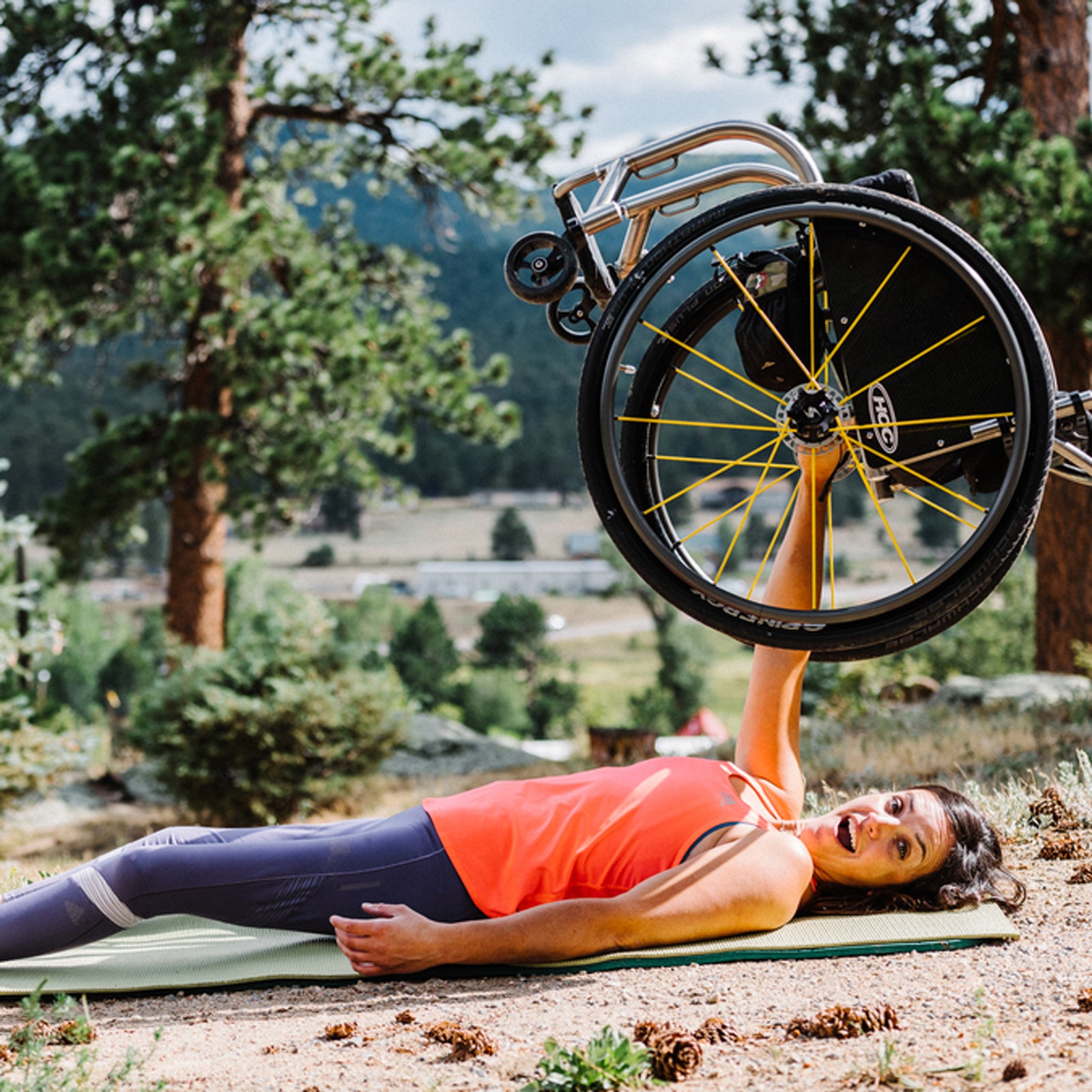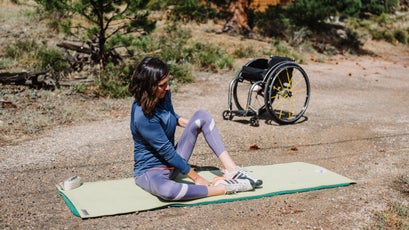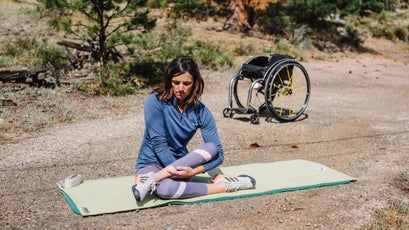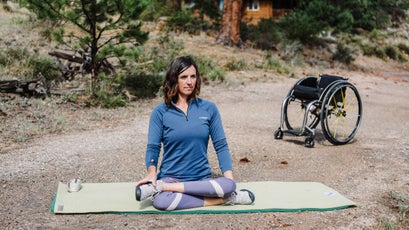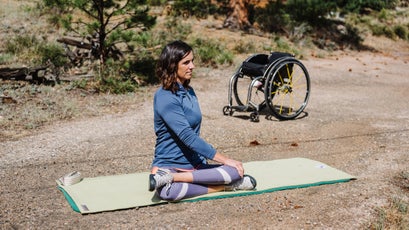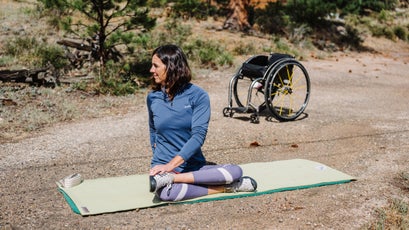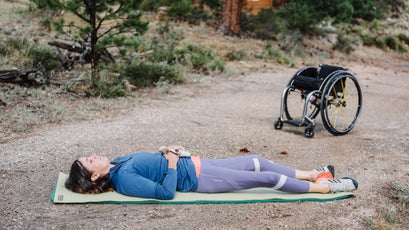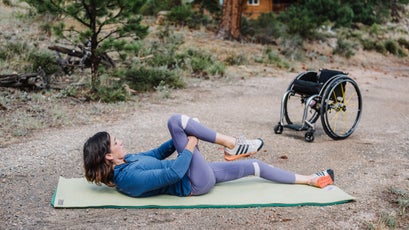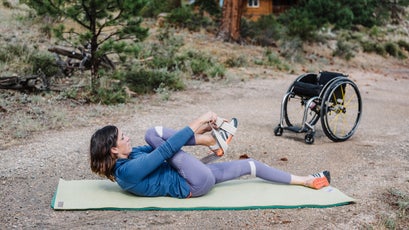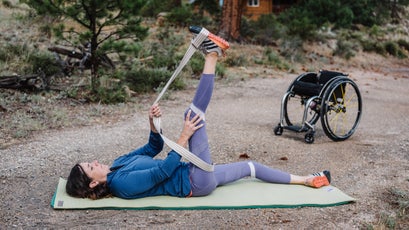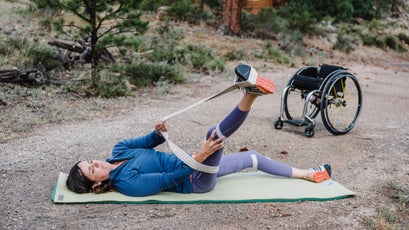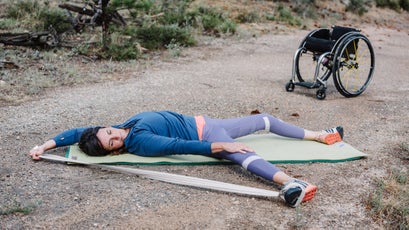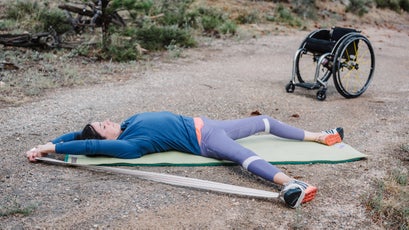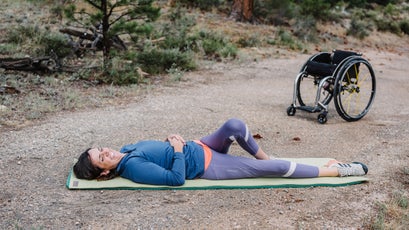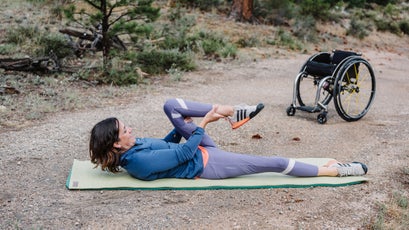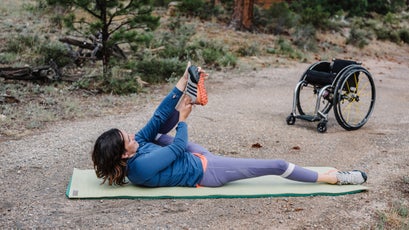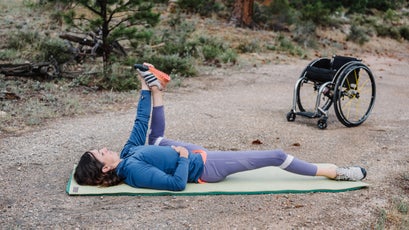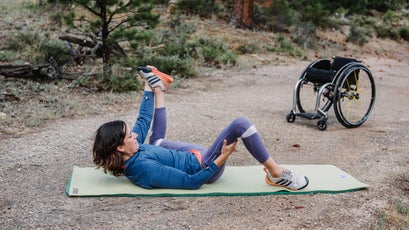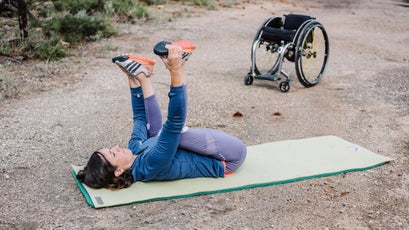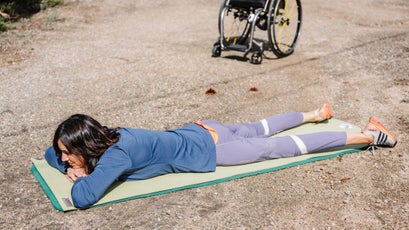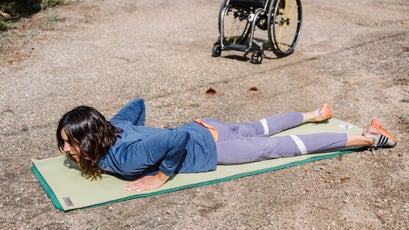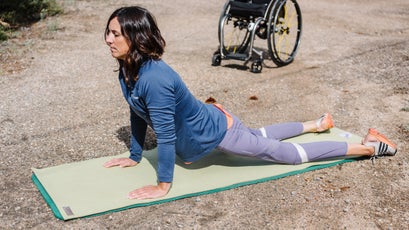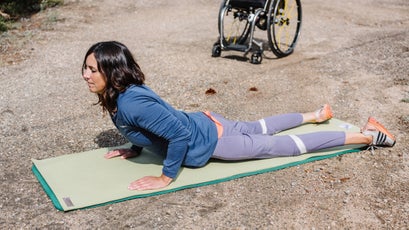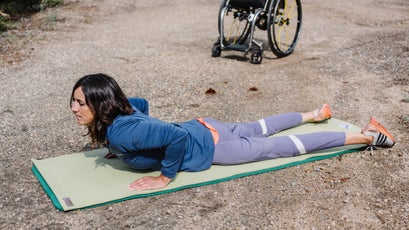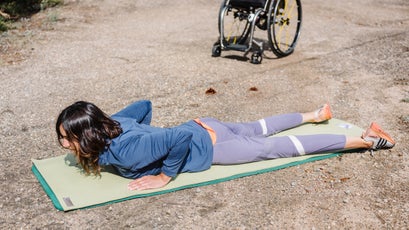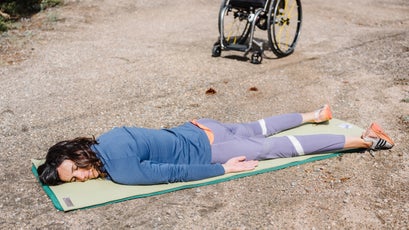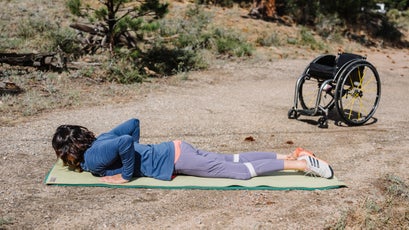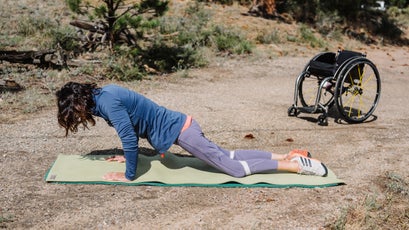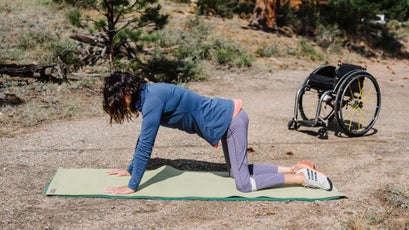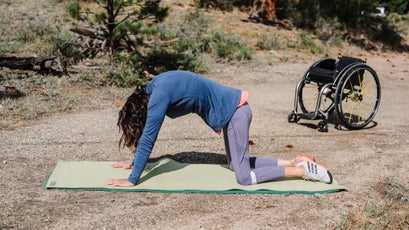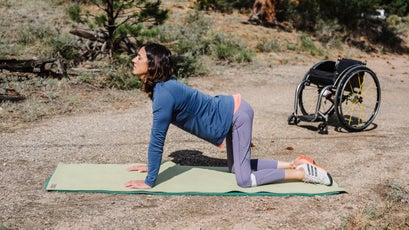In October 2017, Quinn Brett was 15 pitches and roughly 1,500 feet up the Nose of Yosemite’s El Cap when she fell over 100 feet, hit the top ledge of the , and tumbled down behind the semi-detached rock feature. The impact broke her back and left her paralyzed from the waist down. Despite the life-changing spinal-cord injury, at least one thing has remained constant: “Yoga,” she says, “is still there.”
The adventurous athlete explains that it’s been no small challenge to adapt to her new body, and she’s still learning. “I used to be so acrobatic in my yoga and loved doing arm and balance poses,” she says. “It’s frustrating that those aren’t available to me now, but I’ve been trying to work on what I can.” Now Brett teaches mixed group classes for both able-bodied folks and those in wheelchairs , works with yogis one-on-one online, and also has a virtual video series called .
She explains why the benefits of yoga are more important than ever since her accident. “My legs don’t move. They’re always in this static, sitting position,” Brett says. Over time that causes certain muscles to shorten and joints to seize, so she depends on yoga to stay limber and help her do adapted versions of sports, like biking. “It’s important to maintain a range of motion, especially in my hips, so I can transfer in and out of my chair, get into a canoe or on a horse, or swing my leg over and around the handlebars of my bike,” she says. Furthermore, sitting all day strains her back, shoulders, and neck. “Tension in my neck is extreme if I don’t do just a little daily routine,” Brett says. “I also have a lot of nerve pain, particularly in my hips. Doing activity doesn’t make the pain go away, but it’s a good distraction, and it just feels like I’m doing something good for my body.”
Brett aims to do yoga at least every other day for 30 to 45 minutes. She is still able to use most of her core, which allows her to move around on the floor and enter certain poses. But she’s had to get creative with modifications and different yoga tools, such as stretching straps and blocks. Below she shares her personal yoga practice for paralysis. This is what works for her, but every person and spinal-cord injury is different. Adapt these moves as necessary.
Since she lacks sensation in her affected limbs, Brett relies on other cues that she may be overstretching to avoid injury. “Know what your body does when you have a pain-type response, and pay attention to that so you’re not hurting yourself,” she says. “I have noticed my legs do a certain involuntary activity when they’re in pain. Like, if cold water hits them, they kind of spasm.” When you meet resistance, pause, then ease into the stretch. Over a few days or weeks, pay attention to the progress you’re making and how your body reacts.
If you’re still adapting to a spinal injury and hesitant to launch into a routine on your own, look for in-person adaptive yoga classes in your area (which may not be available during the pandemic). When you’re ready to give it a try, either at home or at a studio, start slow and listen to your body. “It’s going to feel frustrating at first, but that’s what I love about it,” says Brett. “I can still find ways to challenge myself and see progress. It gives me a chance to find comfort in the uncomfortable.”
The Moves
Before you get down on the mat, make sure you have a stretching strap, water, and a mobile phone handy or a friend nearby, says Brett. “I always have my stack of stuff ready before I get out of my chair, because it’s a big it,” she says. Hold each pose for 15 to 30 seconds, or longer if it feels good, but be aware of the signs of overstretching mentioned above.
Double Pigeon with Spinal Twist
What it does: Opens the hips and improves mobility in the spine and torso.
How to do it: Sit upright on your yoga mat, with your legs bent in front of you. Pull one heel in toward the opposite hip, then cross the other leg on top so that your shins are stacked and parallel and your feet are either above or below the opposite knee. Find length in your spine, then gently twist to one side, using your hands on your knees for support. Pause for a moment, then twist to the other side. Repeat a few times. Then switch the positions of your legs so the other one is now on top, and repeat the whole process.
Supine Leg Stretch and Hip Opener with Strap
What it does: Opens the hips and stretches your Achilles tendons and hamstrings, which tend to tighten with long periods of sitting.
How to do it: Lie flat on your back. Grab one leg from behind the knee to pull it toward your chest, and loop a stretching strap around the ball of your foot. Hold the strap with one hand and use the other to push your knee away from you to straighten the leg. Then gently pull the strap to raise your leg and deepen the stretch, maintaining that position for 15 to 30 seconds and easing deeper into the stretch with each exhale. Slowly lower your leg out to the side to open your hip, and pause again. Raise your leg to the center, then lower it across your body in the opposite direction. Once again, hold the stretch, then return your leg back to the floor. Repeat with the opposite leg.
Happy Baby Pose
What it does: Relaxes the lower back, opens the hips, and stretches the inner thighs, groin, and hamstrings.
How to do it: While still lying on your back, bring your knees toward your chest and grasp the balls of your feet from the outside. Then pull your knees in toward your armpits, keeping them slightly wider than your torso. Continue to pull your feet until your ankles are over your knees and your shins are perpendicular to the floor. Relax deeper into the stretch. If controlling both legs is too challenging, try one at a time.
Upward-Facing Dog
What it does: Stretches the chest and abdominal muscles and strengthens the arms and the back, which helps improve posture.
How to do it: Roll over on your belly, and position your legs so they’re straight behind you, with the tops of your feet on the floor. Place your hands along your sides near your ribs, with your elbows slightly tilted up and behind you. Then gently press up with your arms as you lift your head, chest, and torso off the floor, bending your back. Continue pressing up until your arms are straight and your pelvis, knees, and shins lift off the floor. Only do what your body will allow—keep your knees or hips on the floor if it feels too intense.
Cat and Cow Poses
What they do: Stretch and improve mobility in the front of the torso, the back, and the neck.
How to do them: Position your knees directly under your hips, and kneel in a tabletop position, with your arms straight and your hands below your shoulders. Exhale as you round your back toward the ceiling and relax your neck to lower your head toward the floor (cat pose). Then inhale as you lift your head and chest, tilt your tailbone toward the ceiling, and let your back arch in a reverse bend (cow pose). Repeat a few more times, paying attention to your breath.


